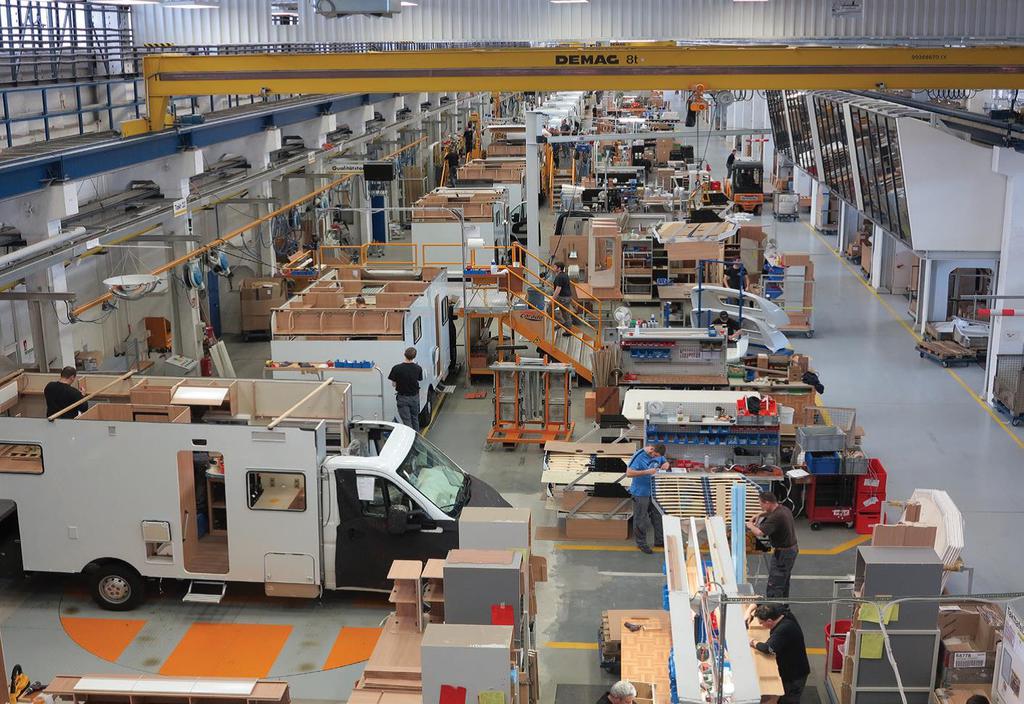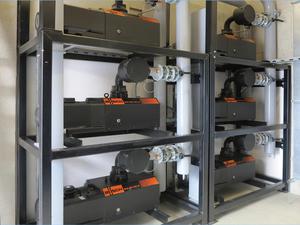

|
Edward Lowton
Editor |


|
| Home> | Plant, Process & Control | >Process equipment | >Centralised vacuum system |
Centralised vacuum system
05 June 2016
German caravan manufacturer, Capron produces interior fittings from wooden composite panels constructed from plywood, plywood composites, polystyrene-filled spruce strips, aluminium compounds, and glass-reinforced plastics, which are clamped by vacuum to nesting tables and console vacuum block units.

In 2015 the vacuum supply was centralised, with Busch project engineers designing a system with a pumping speed equivalent to the nominal maximum demand of five nesting machines, as defined by the machine manufacturer.
In the knowledge that the actual demand was far less, tests were conducted to evaluate the demand in everyday use. After a year, the tests determined that a maximum of five or six of the twelve Mink claw vacuum pumps were required to meet the demand created by full production.
This opened the way to the second stage of the project, in which seven additional machining centres with consoles will be connected to the central vacuum system without increasing the number of vacuum pumps. This stage will be implemented in the summer of 2016 with the extension of the vacuum ring main.
The control system automatically activates only the number of vacuum pumps required to meet the current demand. The vacuum pumps are operated alternately, so they are all in service for approximately the same number of hours. The central vacuum system is connected to the machining centres by a ring main, which also serves as a vacuum reservoir. This has the advantage of immediate availability when vacuum is required by the clamping tables.
The control system automatically activates only the number of vacuum pumps required to meet the current demand. Centralisation of the first four machining centres is reported to have reduced energy consumption by about 40%.
The cost-benefit analysis looks even more attractive when maintenance savings are included: costs for time, replacement parts, and materials disposal are all substantially lower. The central vacuum system is installed in a separate room. Waste heat generated by the system is recovered and used to heat the adjacent training workshop, further improving the overall energy balance.
- Vacuum pumps: Technology and applications
- Busch Vacuum Solutions introduces new R5 RA
- Claw vacuum pump
- Energy efficient pumping
- OTTO Digital Services reduces production downtimes
- New Busch success story - No high-quality porcelain without vacuum
- OTTO Digital Services for vacuum systems
- Vacuum pumps: Efficiency matters
- Busch Vacuum Solutions Presents the Intelligent TYR PLUS Rotary Lobe Blower
- Liquid ring vacuum pumps



















